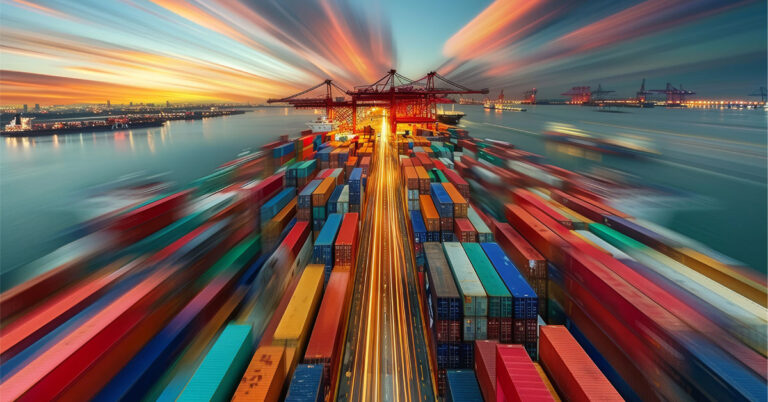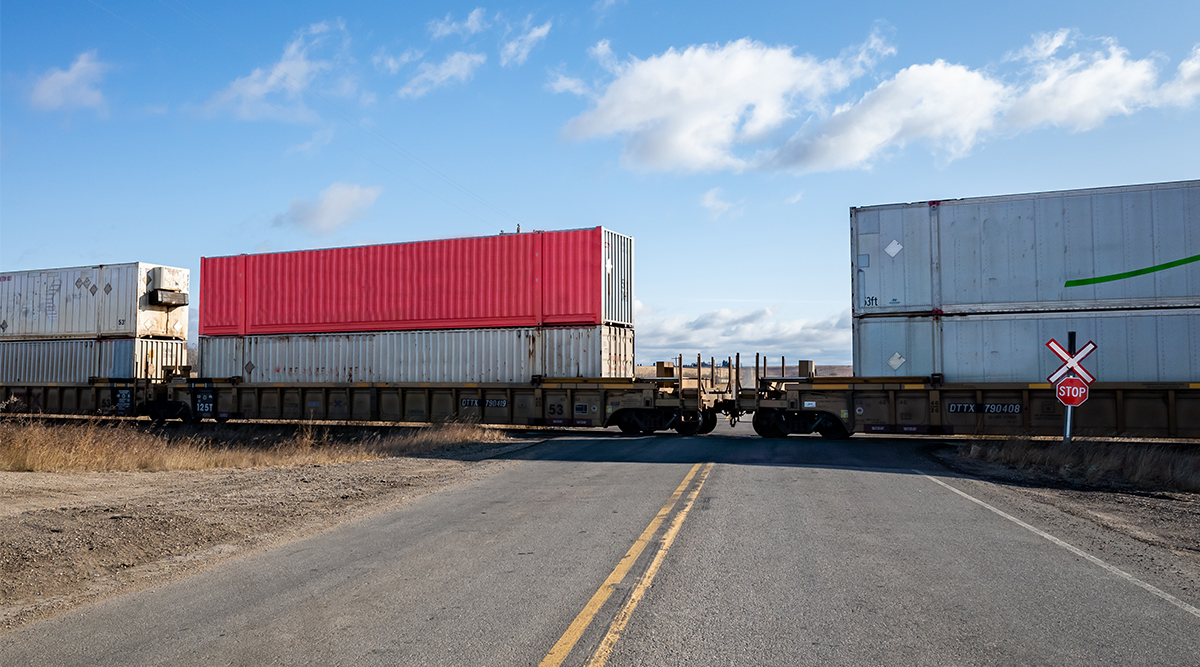Issue 8: Shippers & Carriers Gear up for Holiday Season 2020
The holiday season is finally upon us, and it’s safe to say that it doesn’t look like any other in recent memory. As wish lists are drawn up and families plan safe, socially distant celebrations, shippers and carriers around the world are steeling themselves as they enter into what could be the busiest peak season on record.
Join us today as we discuss the latest news, topics and trends in the supply chain industry today, delivered — as always — with a unique Legacy Supply Chain spin. Let’s dig in.
Today’s Shipment:
- Shippers and carriers look for solutions to offset shipping delays due to holiday demand.
- Top brass at J.B. Hunt anticipate elevated demand through at least Q1.
- Airfreight rates continue to climb as holiday season peak draws near.
- Truckers call for waiver of demurrage charges in light of West Coast congestion.
- Companies may find it harder to withdraw operations from China than expected.
- Amazon adds to its list of regional air hubs — this time, in Europe.
REPORT
Shippers & Carriers Go the Extra Mile to Accommodate Holiday Demand
With peak season in full swing and the pandemic ongoing, businesses everywhere are expected to experience shipping delays due to an unprecedented volume of online orders. As a result, major retailers have increased seasonal hiring to support eCommerce and logistical operations, as well as extended the season, offering holiday sales as far back as mid-October in an attempt to spread out demand. For an example of this, look no further than Amazon, which moved its famed Prime Day from July to September, and then eventually to October.
Retailers aren’t the only ones taking evasive action — parcel carriers have also added resources in anticipation of a busy holiday season and continue to add more. Many parcel carriers have also set strict cutoff dates for when orders need to be placed to be delivered in time for the holidays. But last-minute shoppers need not fear: Thanks to buy online, pick-up in store, retailers have been able to turn closed or otherwise low-traffic stores into online fulfillment centers. In doing so, says Rob Garf, vice president of strategy and insights in Salesforce’s Retail & Consumer Goods practice, retailers are effectively “outsourcing the last mile to the consumer.”
That said, despite retailers’ and parcel carriers’ best efforts, we still anticipate bottlenecks in certain regions due to late eCommerce orders; these will likely strain resources and could result in late deliveries. We advise clients to remain in touch with their carrier representatives throughout the holiday season to understand the changing environment and to communicate changes in delivery expectations to their customers.
When all is said and done, there’s still the matter of returns to consider — which, if early estimates are accurate, could total as much as $280 billion. For shippers, there’s no time like the present to begin preparations for the eventual onslaught, with special attention to making the returns process as safe and convenient as possible.
OBSERVATION
J.B. Hunt Expects Demand to Remain High through Q1 as Retailers Restock Inventory
During a virtual presentation at Baird’s 2020 Global Industrial Conference, management from J.B. Hunt Transport Services shared that they expect elevated demand to continue through the first quarter of 2021, if not longer. The current freight market remains tight, with capacity in short supply; this is further complicated by service bottlenecks on railroads due to container congestion at West Coast ports and warehouse labor shortages causing delays at customer facilities.
There’s also the matter that demand for physical goods remains at an all-time high, with consumer spending trending toward hard goods over services. Fears of a winter wave of COVID-19 have prompted many retailers to take on additional stock to avoid a stock-out situation. J.B. Hunt’s observations are consistent with other industry findings: The Association of American Railroads reports that weekly intermodal traffic on U.S. Class I railroads is up nearly 10% on average compared to 2019, and Norfolk Southern and BNSF Railway have seen volumes increase 4% and 9% respectively quarter-to-date.
The domestic transportation market is certainly feeling the squeeze of strong B2B and B2C sales, as well as the need to replenish inventory largely sourced from Asia. According to the Wall Street Journal, October imports were up 13.3% YoY. This is affecting port-level transportation, as well as downstream trucking and rail. Domestically, demand for truck and rail capacity is expected to continue into Q2, at least, which will continue to put upward pressure on rates. The trucking industry could also face driver shortages in 2021, since COVID has led to many driver school closures, which has tightened the pool of incoming drivers.
All of this said, shippers need to continue to play for delays and disruption into Q2 of 2021. Domestically, we believe that asset-based carrier capacity will be strained and that freight brokers can play a valuable role in supporting capacity needs. Consider whether you are a “Shipper of Choice”:
- Do you pay fast and accurate?
- Do you keep drivers out of detention?
- Do you treat providers as you would like to be treated?
- Do you make efforts to improve flexibility to help providers?
- Do you communicate with providers and include them in your planning?
These characteristics make shippers more attractive to providers and can help you cement stronger provider relationships, which will be crucial to mitigate disruption and cost going forward.
NEWS
West Coast Experiences Chronic Congestion, Leading to Significant Delays
Speaking of container congestion at West Coast ports, the California Trucking Association (CTA) and Harbour Trucking Association (HTA) report that cargo movement at the U.S. port complex of Los Angeles and Long Beach is “nearing complete gridlock.” This congestion is the direct result of the overwhelming influx of eCommerce shipments out of Asia. Data from the National Retail Foundation shows 2.11 million TEUs of import cargo since September, the highest volume in nearly 20 years.
The congestion is made worse by lower dock productivity due to COVID-related crew reductions, a shortage of chassis and truckers being unable to drop off containers and pick up import boxes in one visit. With congestion starting to spread to rail carriers and increased truck turn times at terminals, CTA and HTA have called for terminal operators and shipping lines to suspend detention and demurrage charges, threatening to take their case to the U.S. Federal Maritime Commission if they don’t see progress.
The Legacy team has seen the effects of West Coast port congestion firsthand affecting shipments within our system. The Los Angeles and Long Beach bottleneck has also delayed the arrival and unloading of new vessels, preventing them from berthing at terminals. This affects carrier scheduling globally, delaying the arrival of containers at ports downstream from Los Angeles and Long Beach, particularly Oakland.
It’s worth noting that this congestion and the ensuing delays are not unique to the West Coast; we’ve also seen them across U.S. and Canadian ports, though at varying degrees. In light of this, we continue to advise our clients to book and ship early, allowing for an additional one to two weeks of transit time to end consumers. Negotiate later delivery dates with your customers in anticipation of these delays; it’s critical to manage delivery expectations until early March.
INTERVIEW
Companies Face “Difficulty Achieving Escape Velocity from China”
In a recent interview with FreightWaves, Willy Shih, economist and professor of management at the Harvard Business School, commented on recent efforts from North American companies to withdraw operations from China. Shih’s professional opinion? It’s going to be far more challenging than previously expected.
“Many companies are going to have difficulty achieving escape velocity from China,” said Shih. “At best, they might orbit around it. There’s going to be no tolerance for higher prices from consumers, especially in this global recession that we’re suffering through. There’s still going to be demands for efficient use of capital and capacity. Scale advantages will persist, and this will be important for those industries that have a large footprint in China.”
Much of that difficulty stems from the fact that China has built a very strong infrastructure around manufacturing, the sourcing of component parts, and transportation. Although we’ve seen surprising shifts from some companies to Southeast Asia and Mexico for manufacturing, these changes have been partial and slow. To that end, we do expect to see continued change, but it will likely be years until we see significant change. Adding new layers to a company’s supply chain will offer diversification but will also introduce more complexity to manage.
It goes without saying that any sourcing changes should be carefully considered. When evaluating new sources, pay close attention to the following in your new origin location:
- The geopolitical climate
- Local culture and customs
- The legal environment and labor laws
- Access to components and the supporting supply chain network
- Transportation from the final manufacturer to your destination
BRIEF
Rising Airfreight Rates Support Continued Recovery in Demand
Rounding off our peak season coverage — for this month, at least — the increased demand for airfreight heading into the holidays has led rates to spike again. Though capacity has increased substantially over the past few months, overall global airfreight capacity is still down over 25% YoY; with demand for capacity at an all-time high, airfreight carriers are leveraging this continually contracting capacity to cement longer-term charter contracts with customers.
It’s no secret that Q4 brings new demand for air cargo. This demand is driven by overall volumes, as well as spikes attributed to the releases of the new Apple lineup and the PlayStation 5. Additionally, growing congestion in ocean freight networks has caused more cargo volume to switch to air. We expect this to continue through Chinese New Year and into early March.
Air rates are steadily creeping up; we expect them to peak in early-to-mid-December, then stabilize for a few weeks before starting to slide back. We also expect continued high-volume levels to support post-holiday sales and inventory rebuilds. In order to mitigate air freight costs, plan to ship early and allow carriers a larger window to move cargo on a deferred service basis. Also, evaluate packing to maximize cargo density: Carriers charge based on the greater of actual or dimensional weight of the cargo.
EXPANSION
Amazon Air Opens First Regional Airhub in Europe
In recent years, Amazon has made significant investments into its fulfillment operations in order to accommodate rising consumer expectations; you might even remember that in the August 2020 edition of the Monthly Shipment we discussed its move to turn vacant department stores into fulfillment centers. The latest play from the eCommerce behemoth has been to open its first European regional air hub. That’s right: As of November 5, Amazon Air, the company’s in-house cargo airline, is now able to deliver packages from the Leipzig/Halle Airport in central Germany to Louis Armstrong International Airport in New Orleans, La. using one of two leased Boeing 737-800 aircraft.
This regional air hub joins Amazon’s seemingly ever-growing list of gateways — of which there are 20 — though this marks its first in Europe. In addition to having hubs in Hawaii, Texas, Florida, California and more, the company has plans to open a $1.5 billion national hub at the Cincinnati/Northern Kentucky International Airport in 2021.
As Amazon adds capacity to its network, it’s also adding capacity to the global air cargo network at a time when it is sorely needed. Though Amazon continues to grow its market share, competitors, such as Shopify and Alibaba, are also ramping up operations. Traditional retailers are leveraging shopping mall infrastructure to support B2C business by staging inventory closer to end consumers. The third-party logistics industry is also developing strong B2C capabilities through the adoption of new technology and partnerships with Shopify, Magneto and other eCommerce platforms to support mid-market and smaller sellers. ECommerce has proven that it’s here to stay, and we expect B2C demand for air service to continue to grow in order to meet consumer transit and delivery times.
What are you doing prepare for peak season? Let us know with a quick email — we always like to hear what our readers are up to.
For even more news, as well as expert advice on how to enhance your supply chain operations, check out our blog or resource center. We’re always updating them with fresh new content designed with industry professionals in mind. And, as always, don’t hesitate to contact the specialists at Legacy Supply Chain today if you’re in need of any assistance.
Until next time, this is the Legacy team — over and out.
-
Tariff Update: Where things are heading next
The buzz around tariffs has settled down over the last few weeks. Progress is being made in many areas, so the purpose of today’s post is...
+ Read more -
Successful 3PL-Customer Relationship – 6 Cornerstones
Hiring a third-party logistics (3PL) provider is a strategic approach for businesses to increase their capacity without expanding their...
+ Read more -
Canadian Rail Strike? – What We Know So Far
On May 1st, CN (Canadian National Railway) and CPKC (Canadian Pacific Kansas City) rail workers voted overwhelmingly to authorize a strike...
+ Read more





